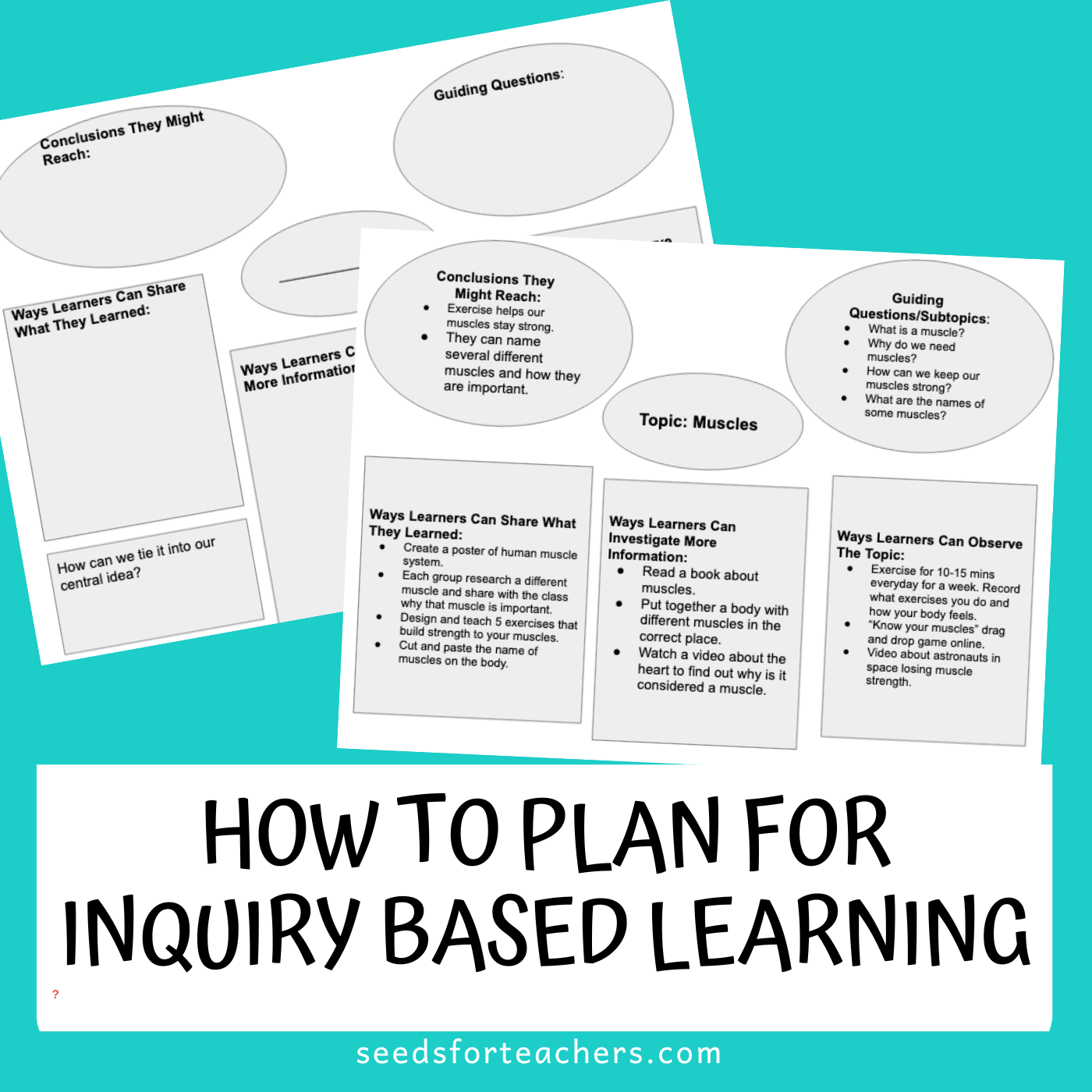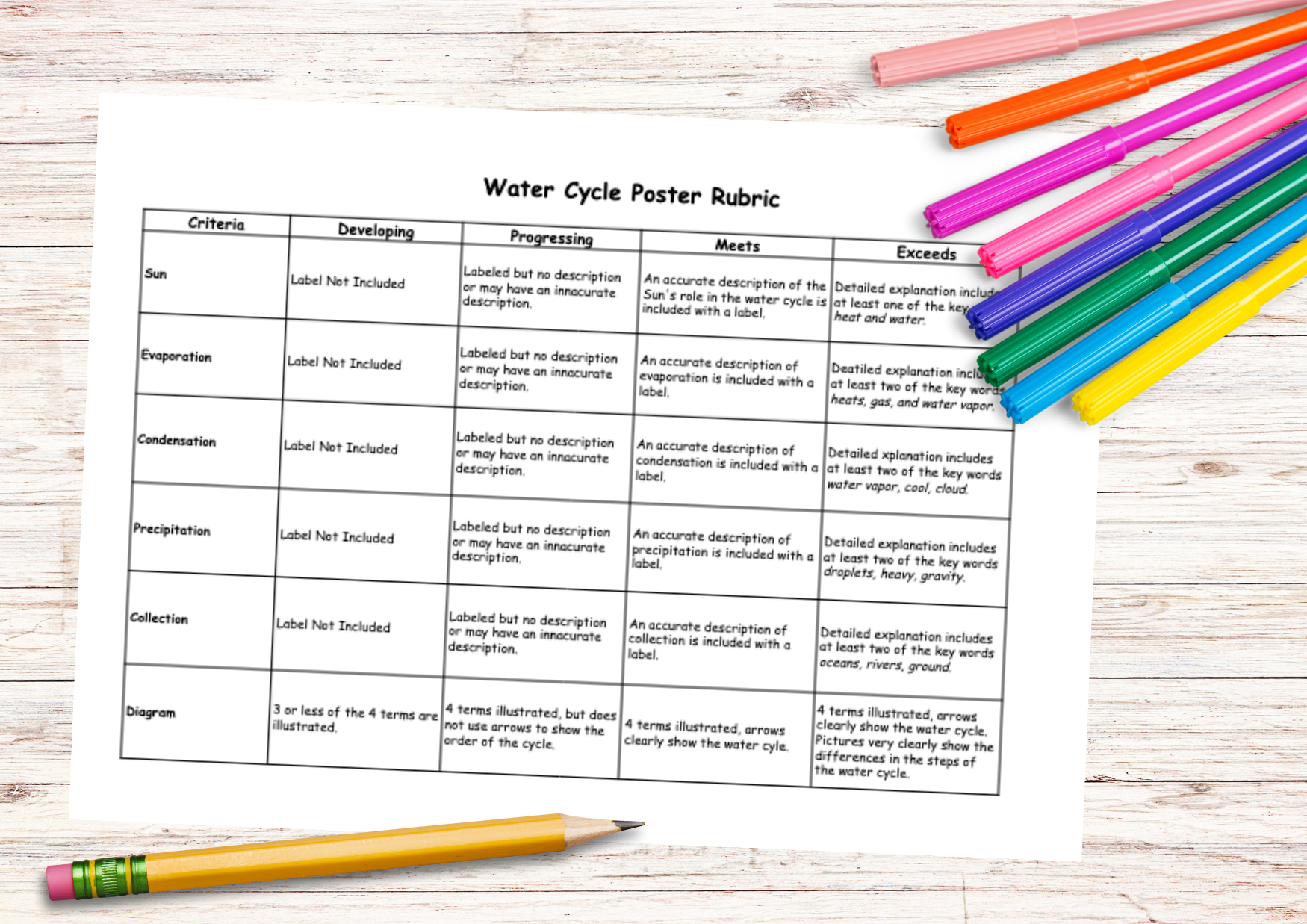In my first post about rubrics I defined what a rubric is and the parts of a rubric. Assuming you now know the basics, I’m going to talk about how to make your rubric even better. Here are some common problems people have when they first start developing rubrics:
I have a student who falls between two boxes on the rubric, what do I do?
My colleagues and I used the same rubric to grade our students projects but they graded the projects very differently from me.
Rubrics seem too complicated. I just want to grade the traditional way.
These are all really great things to be thinking about and reflecting on as you practice making rubrics. Let’s think about the real purpose behind rubrics to get a foundation.
What is the Benefit of Using a Rubric?
Rubrics are not meant to be used for every assignment. Look at the examples below.


The assignment on the left is a math assignment. Each question has only one answer and any teacher (any adult really) can mark the questions correct or incorrect without needing any explanation. These types of assignments don’t need a rubric.
The picture on the right is a book report. If I give three teachers this assignment to grade they would probably each do it slightly different. Different teachers expect their students to include different things in a book report. Some teachers might grade on creativity, design and spelling while another teacher might not. Since the “answer” for this kind of assignment is complex and since different teachers may grade it differently, a rubric can be created to make expectations crystal clear.
- Rubrics ensure that projects are graded fairly and equally across different teachers in the same grade.
- Rubrics outline all the expectations for students and provide specific feedback on areas they excel and areas they need to improve.
- Rubrics provide students, parents and administration with clear transparency on how assignments are graded.
How Can I Make My Rubric More Effective?
1. Demonstrate different levels of student understanding as the rubric goes from 1-4 or developing to exceeding.
Doing more of the same thing doesn’t represent exceeding expectations. I like to use verbs from Bloom’s taxonomy for the different levels on my rubric. The verb list below is from teachthought. That way it shows that student’s have a deeper understanding of the content and not just are able to answer more math questions or name more living thing examples.

2. Make sure it is detailed and avoids vague words that different people might interpret in different ways.
Words such as neat, beautiful and clear can have different meanings for different people. Try to be as specific as possible with characteristics and attributes you are looking for in each area. Say something such as “looks at the audience, used a loud voice and gestures” instead of saying “has good presentation skills”.
3. Match it Closely with The Standard or Objective of the Assessment.
Sometimes teachers build rubrics that assess all kinds of things EXCEPT the actual standard they were teaching. Let’s take a book report again for example. There are so many things you can grade in a book report: spelling, grammar, detailed description of the book, analyzing or forming your own opinion about the book, identifying story elements and even the creativity and design of the book report product. However, you had students create book reports as a result of teaching a specific standard(s) in the curriculum. Those standards need to be in the rubric.
If the standard was to analyze motives of different characters then there needs to be at least one row on your rubric assessing that specific thing. Sure you can also add a row for spelling and grammar but don’t forget the real reason for the assignment.
4. Make Sure it Results in a Final Mark That is Reflective of Student’s Overall Work.
When calculating the total number of points for a rubric there is a bit of a system to it. I always start by determing how many total points possible I want the project to be worth. You can have each row in the rubric be the same amount of points or different. In projects where you grade for spelling for example, you might not want the spelling to weigh the same number of points as the main content of the report or story.
In my school the highest column (exceeding) is over 100% so that means the “meets” expectations column worth the total number of points for the assignments while exceeding now gets bonus points. The lowest column the developing columning is below 50% on our grading scale. So I half the number of points possible and that is the maximum points all the developing column can be. The column in between these (“progressing”) has to be between 51-79% according to our grading scale. Check the examples below where I’ve calculated the value for each box on the rubric.
| Developing | Progressing | Meets | Exceeds |
| 2 | 3-4 | 5-6 | 7 |
| 2 | 3-4 | 5-6 | 7 |
| 2 | 3-4 | 5-6 | 7 |
| 2 | 3-4 | 5-6 | 7 |
Total marks= _____/ 24 points
| Developing | Progressing | Meets | Exceeds |
| 4-5 | 6-7 | 9-10 | 12 |
| 4-5 | 6-7 | 9-10 | 12 |
| 4-5 | 6-7 | 9-10 | 12 |
Total marks= _____/ 30 points
If you’d like to get more explanation on calculating the total mark for a rubric check out Mark Wise’s post in Cult of Pedagogy
More Posts You Might Like:



